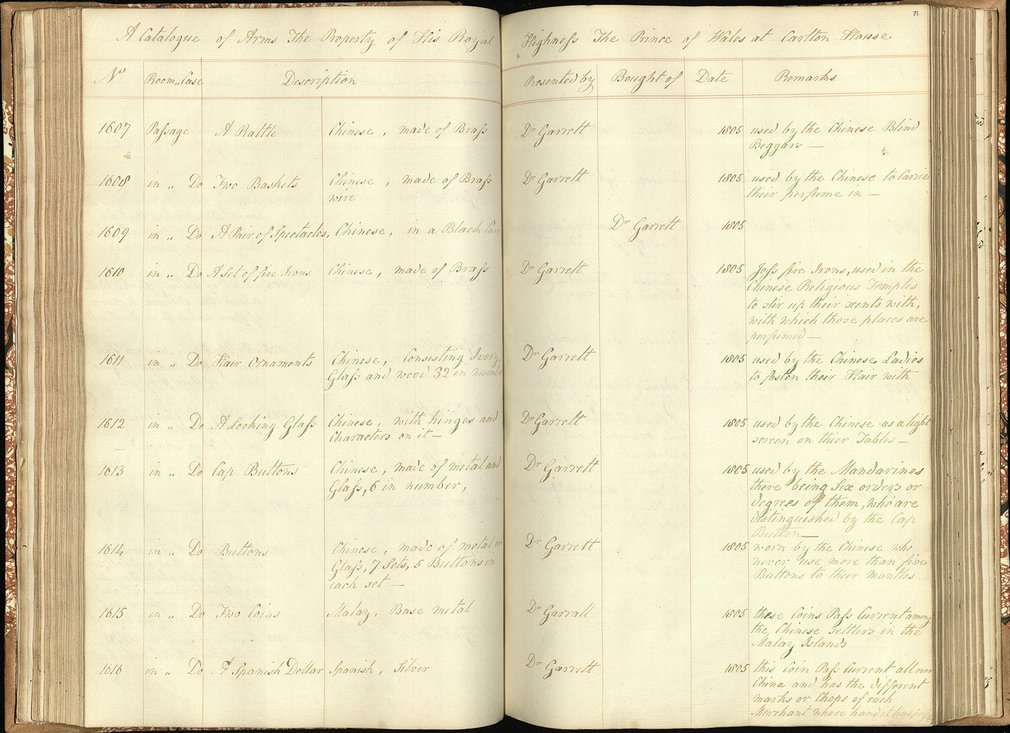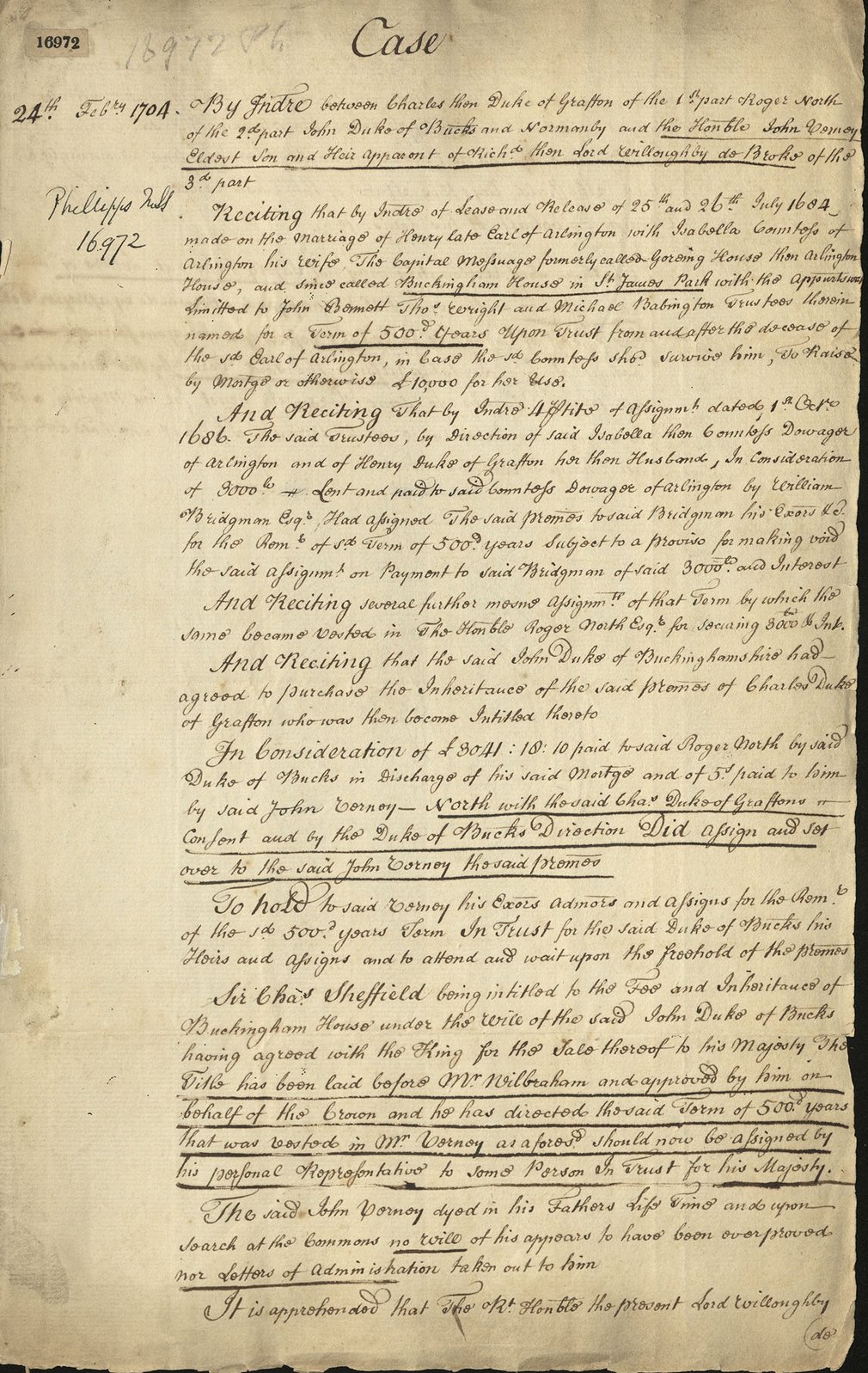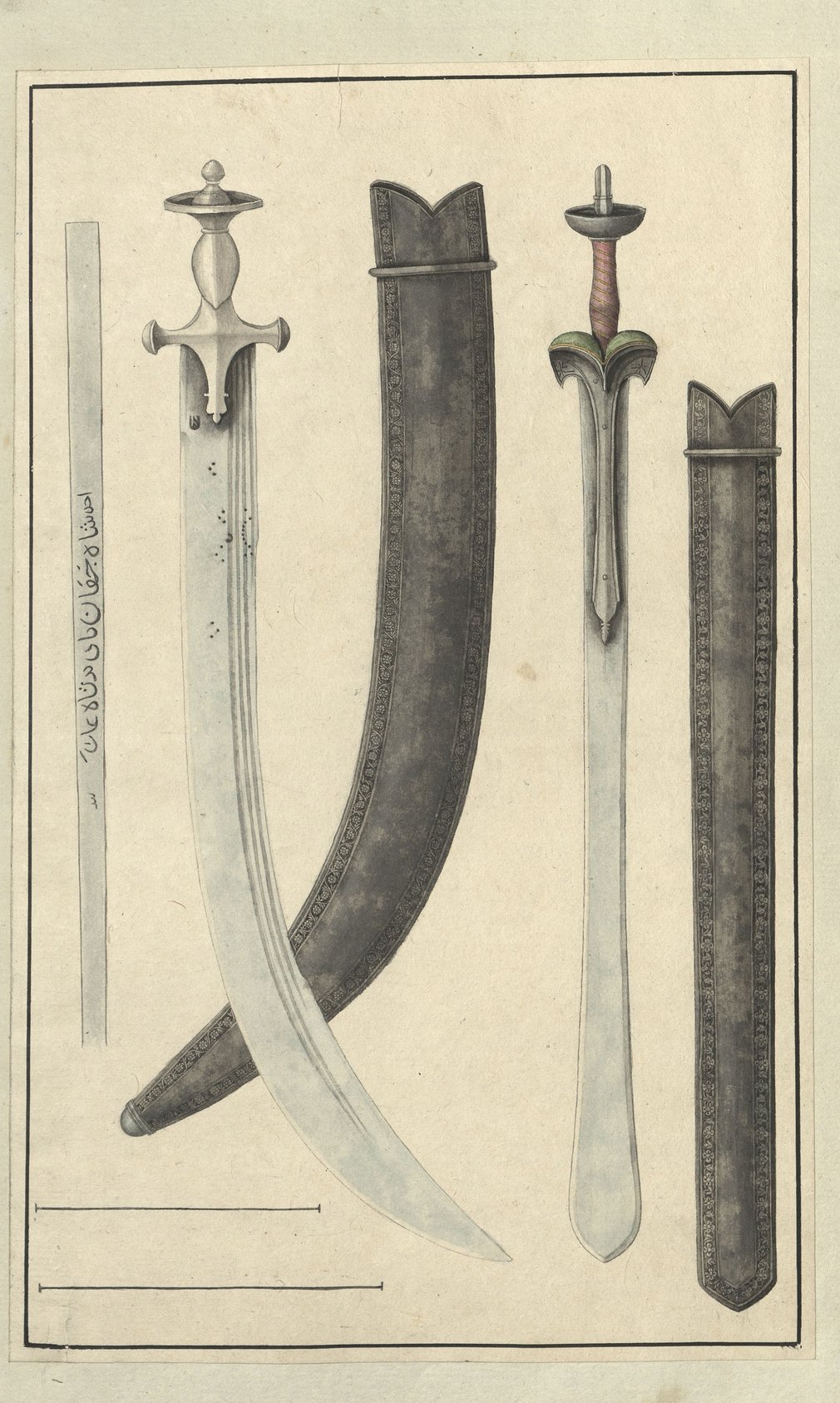
A Catalogue of Arms: property of George, Prince of Wales at Carlton House, GEO/ADD/19/52 Royal Archives/© Her Majesty Queen Elizabeth II 2019
The collection of Georgian inventories is an artificial grouping of over 100 items brought together from different places. Many, though by no means all, have been in royal possession since their creation and have continued to be used to support the stewardship of the Royal Collection. They mainly comprise ledgers that detail the contents of the palaces occupied during the Georgian period. More than half of them document the contents of Carlton House, the residence of George, Prince of Wales from 1783, while others relate to Brighton Pavilion, Windsor Castle, Kensington Palace and Hampton Court Palace, amongst other places. They date variously from about 1700 up to 1914, as they were often working documents which were used and kept up-to-date over long time-spans.
There are several different kinds of inventories in this collection. The largest group comprises inventories of particular residences, often with a focus on a particular kind of object, e.g. furniture. Others are catalogues of a specific kind of object across multiple residences. A further group records transfers of items between residences. Some describe or specify the decoration and furnishing of particular rooms and apartments. There are also a number of lists of deliveries, some of which include financial information.

Documents relating to the purchase of Buckingham House by George III, GEO/ADD/19/29 Royal Archives/© Her Majesty Queen Elizabeth II 2019
The collection also includes a few items which are not actually inventories. For instance, GEO/ADD/19/16 is a letterbook from 1805 of George Villiers, George III’s bailiff at Windsor, reflecting the King’s affairs there, including much about agriculture. GEO/ADD/19/17 comprises a copy of the will of the Duke of Buckingham and associated documents while GEO/ADD/19/29 contains various papers relating to the purchase of Buckingham House by George III in 1762-1763.
It should also be noted that this collection is neither complete nor comprehensive, for there are a few inventories elsewhere in the Georgian Papers. Most notably there are several within the Royal Library. There are also a few individual inventories within the personal and financial papers of a number of royal family members and courtiers.
The content of these inventories is varied; they cover everything from furniture, paintings, statuary, clocks, arms, armour, porcelain, plate, and jewels, through to plate glass and stoves. Some documents, such as GEO/ADD/19/14 detail property such as forests and estates, rather than objects. There is also a stud book, GEO/ADD/19/6, which lists horses and their lineage.
The inventories also differ in the precise format and information they contain. In most cases the objects are described, though the level of detail provided can vary considerably. Usually the name of the supplier or creator is given, along with the date of acquisition, and the room in which the item was placed. Some also contain technical information, dimensions and valuations. Some inventories even include comments about the items, which can provide contemporary assessment of their quality and condition or information about their history and provenance. At the other extreme, Arms of Hindoostan is a lavishly illustrated volume showing Indian weaponry which has very little descriptive text at all.
The most obvious value of these inventories is the record they provide of the provenance of objects within the Royal Collection. However, the inventories also provide evidence of how the rooms of the royal residences were decorated, furnished and used at different points during the Georgian period. For example, ‘An Inventory of the household furniture at Buckingham Palace taken 2 May 1825’ provides some of the historic names of rooms such as ‘The Warm Room’, and ‘The Japan Room’. It also details the furniture that was in Buckingham Palace such as ‘A Grand Piano-Forte in a mahogany case’ from the Dressing Room. GEO/ADD/19/87 gives a room-by-room list of which pictures were hung throughout Kensington Palace in 1818. Carlton House is particularly well documented, with eleven inventories listing weapons and a further fourteen cataloguing the furniture.
The inventories, either by themselves in some instances, or in combination with other sources, reveal something of use and re-use of objects. This includes transfers between stores and different residences, such as documented in GEO/ADD/19/74, ‘A list of furniture sent to St James’s Palace, Harrington House, the Stud Lodge and the Pavilion Brighton, formerly belonging to Carlton House’. The record is particularly rich concerning the movement of furniture and other items from Carlton House when it was demolished in 1826. One of the inventories, a ‘List of Parcels and Packages containing George IV’s Jewels deposited at Bank of England’, enumerates the jewel boxes deposited and the jewels that are contained therein. Conversely, GEO/ADD/19/58 lists items put up by the Prince of Wales in 1793 as a surety for a loan of £60,000.

